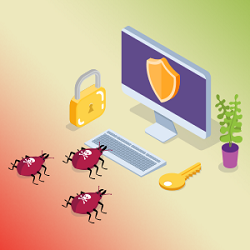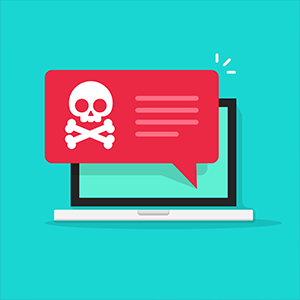How to scan for ransomware

The best way to scan for ransomware is to use a robust anti-malware product from a reputable cybersecurity company. Ideally, you should partner this with safe surfing/emailing, plus robust physical security and a ransomware-proof approach to storing your data. With that in mind, here is a quick guide on how to scan for ransomware and what else to do to keep yourself safe from it.
Scan for ransomware
These days it is very risky to rely on the default security applications bundled with the main operating systems (both desktop and mobile). There’s nothing actually wrong with them. They’re just not in the same league as the applications created by proper cybersecurity companies.
The best option for both individuals and organizations tends to be a cloud-based anti-malware scanner with an integrated firewall. Using a cloud-based solution not only means that the vendor takes care of all updates but also that the main storage and processing load is put onto the back-end servers rather than the client device. Using a combined product is not only more cost-effective and convenient but also makes sure that everything works together out of the box rather than having to be appropriately configured.
For completeness, reputable anti-malware products work on the assumption that you are keeping your local device properly updated. They do not attempt to fix issues that have already been solved by the software developers. This means that you need to commit to applying all security-related updates promptly. If this is an issue for you, then you need to get a managed IT services provider to take care of the matter.
Safe surfing and emailing
It’s important to remember that no form of malware protection can guarantee 100% protection all of the time. This is particularly true when it comes to ransomware. The reason for this is that ransomware is so lucrative that cybercriminals can afford to put a lot of effort into keeping it updated and this means that it just keeps getting more and more sophisticated.
The two key ways of spreading malware in general and ransomware in particular are email attachments and malicious websites. The more emails you receive and the more websites you visit, the more likely it is that you will be tricked into trying to open a malicious attachment or click on a malicious link. Most of the time this will not matter because your anti-malware product/firewall will catch it and stop you. If, however, this fails, then you have a Ransomware attacks.
It is therefore important to keep safe surfing and safe emailing in mind at all times. If you are on your own, then you might want to try using the settings in your anti-malware product and also your browser to enforce discipline rather than relying on your own discipline (and memory). If you are running a company network then you absolutely must have clear rules on internet and email use and these have to be supported by effective enforcement, automated if possible.
Scan For Ransomware Robust physical security
Although most malware, including most ransomware, is transmitted digitally, be aware that it can be installed locally. What’s more, the easier it is for someone to install malware locally, the more likely it is that someone will be tempted to do so. For the record, even if you can trust the integrity of all of your employees (which, sadly, is very rarely the case in the real world), you cannot rely on their judgment. In other words, even honest people can be tricked by malicious actors. Make sure, therefore, that you enforce robust physical security.
Ransomware-proof data storage
There are two steps you need to take to minimize the damage a ransomware attack can cause. Firstly, you need to ensure that your sensitive data is stored encrypted. This will not stop the ransomware from working. It will just encrypt the data again. It will, however, stop the attackers from being able to harvest your data and either sell it or expose it. It will, therefore, stop you from landing in trouble with data protection authorities.
Secondly, you need to ensure that you have both a local and an off-site data backup. The latter needs to be completely separate from your main system. Local data backups are very vulnerable to compromise if the main system is breached. This is particularly true with ransomware attacks as, even with the best of precautions, there are often many ways for the ransomware to make its way into the backup or for encrypted files to be transferred to the local backup.
Please click here now to start your free 30-day trial of Xcitium AEP.
Related Sources:
Ransomware Works
Ransomware Attacks
Ransomware Protection
Ransomware Removal
Ransomware Virus
ITSM Software
Reveton Ransomware




